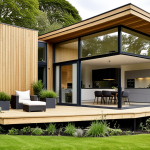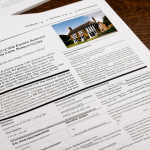Innovative On-Site Approaches for Biodiversity Net Gain
Achieving biodiversity net gain on-site demands creative, site-specific solutions that harmonise ecological goals with development constraints. One effective strategy is designing multifunctional green infrastructure. This entails integrating diverse habitats such as wildflower meadows, ponds, and native scrub within limited spaces, transforming standard green areas into thriving ecological hubs. Carefully tailored to site conditions, these enhancements boost habitat value without reducing usable land.
Another promising method involves retrofitting brownfield sites. Previously degraded or contaminated lands, when revitalised with high-value habitats like wetlands or grasslands, contribute substantially to biodiversity. This approach not only mitigates ecological loss but leverages underutilised areas to meet on-site biodiversity strategies.
Topic to read : Unearthing opportunities: how uk property investors can thrive in the green building revolution
Phased developments benefit from incremental habitat creation. By employing phased habitat creation alongside construction timelines, developers can establish habitats that mature over time, ensuring sustained biodiversity improvements concurrent with project delivery. This staged approach suits dynamic projects, maintaining compliance and ecological integrity.
By blending habitat enhancements with thoughtful planning and site-specific solutions, on-site biodiversity strategies can achieve lasting gains. This fosters resilient ecosystems while supporting development viability, balancing environmental stewardship with practical land use.
In the same genre : Maximizing your profit: a comprehensive guide to selling inherited property in the uk
Leveraging Off-Site Partnerships and Landowner Collaborations
Establishing landowner partnerships is crucial for achieving off-site biodiversity net gain when on-site options are limited. Long-term agreements with local farmers and landowners create stable frameworks for habitat creation and management beyond development boundaries. This approach supplements on-site biodiversity strategies, ensuring larger-scale habitat enhancements and ecological connectivity.
Pooling resources via developer-led conservation consortia further strengthens these collaborations. By uniting several developers and stakeholders, consortia can share costs and expertise to manage and restore habitats more effectively. This collective action addresses challenges in meeting biodiversity targets individually and fosters sustained conservation collaboration.
Accessing national habitat banks offers flexible options for developers unable to implement every necessary habitat enhancement on-site. Habitat banks provide pre-established, high-value ecosystems that generate biodiversity credits. These can be purchased to offset persistent habitat losses, integrating seamlessly with off-site biodiversity net gain obligations.
Together, these landowner partnerships and collaborative models broaden the practical scope of biodiversity achievement. They enhance ecological outcomes through strategic, landscape-scale habitat restoration while aligning with planning requirements. This diversified approach empowers developers to balance practical constraints with robust conservation goals.
Innovative On-Site Approaches for Biodiversity Net Gain
Achieving on-site biodiversity strategies effectively hinges on inventive, adaptable design that respects site constraints. One key approach is crafting multifunctional green infrastructure that combines diverse habitats—such as wildflower meadows, ponds, and native scrub—within limited land areas. This method maximises ecological value while maintaining usable space, directly supporting biodiversity net gain objectives.
Retrofitting brownfield sites with high-value habitats offers a powerful way to regenerate underutilised or degraded land. Introducing wetlands or species-rich grasslands transforms these areas into thriving ecosystems, aligning perfectly with site-specific solutions that fit unique development conditions.
For phased developments, combining habitat enhancements with construction timelines via phased habitat creation ensures habitats mature as the project progresses. This synchronisation enables continuous biodiversity improvement in parallel with development delivery.
Innovatively, some projects complement on-site actions with habitat banking, purchasing credits from established habitats to offset unavoidable losses. Embracing on-site biodiversity strategies supported by habitat enhancements and tailored designs positions development to meet stringent biodiversity targets reliably, proving that ecological goals and practical land use can coexist efficiently.
Innovative On-Site Approaches for Biodiversity Net Gain
Designing multifunctional green infrastructure is central to effective on-site biodiversity strategies, particularly when space is constrained. This approach integrates varied habitats—such as wildflower meadows, ponds, and native scrub—within a single site, enhancing ecological value without sacrificing usable land. By carefully selecting species and habitat types tailored to site conditions, developers can optimise biodiversity outcomes while maintaining practicality.
Retrofitting brownfield sites presents another key site-specific solution. Transforming previously industrial or contaminated lands into high-value habitats like wetlands or species-rich grasslands not only compensates for development impacts but also revitalises underutilised areas. This conversion significantly contributes to biodiversity net gain by expanding habitat variety and connectivity.
Phased habitat creation complements these methods, especially in developments delivered over time. Aligning habitat establishment with construction phases allows habitats to mature progressively, sustaining biodiversity improvements throughout development. Additionally, pairing on-site actions with habitat banking can offset unavoidable habitat losses. Purchasing credits from established habitat banks supports net gain obligations while maintaining flexibility in site design.
Together, these approaches showcase how tailored, innovative habitat enhancements embedded in on-site biodiversity strategies enable developers to achieve meaningful ecological benefits within complex, evolving project parameters.
Innovative On-Site Approaches for Biodiversity Net Gain
Maximising on-site biodiversity strategies requires inventive integration of habitats within project constraints. Designing multifunctional green infrastructure is essential. This means combining elements like wildflower meadows, ponds, and native scrub in compact, complementary layouts tailored to the specific site. Such habitat enhancements increase species diversity without compromising land usability, aligning with practical development needs.
Retrofitting brownfield sites is another powerful site-specific solution. These previously impacted lands can be restored to valuable habitat types such as wetlands or species-rich grasslands, greatly improving local biodiversity. This approach utilises underexploited spaces for habitat enhancements, aiding developers in meeting net gain targets while revitalising degraded areas.
For phased developments, implementing phased habitat creation allows habitats to establish progressively alongside construction. This ensures habitats mature effectively over time, maintaining continuous biodiversity improvements in tandem with project delivery. Combining this with habitat banking—purchasing credits from established habitats—adds flexibility, offsetting unavoidable on-site losses and complementing on-site biodiversity strategies.
Together, these adaptive, layered approaches provide practical solutions to maximise ecological benefits on-site, demonstrating that biodiversity net gain can be achieved within real-world development limitations through smart, tailored actions.
Innovative On-Site Approaches for Biodiversity Net Gain
Designing multifunctional green infrastructure remains a cornerstone of effective on-site biodiversity strategies. Within tight site constraints, this involves integrating complementary habitat types—wildflower meadows, ponds, native scrub—into compact, layered layouts. Such designs maximise habitat diversity and ecological niches without sacrificing development space, meeting both ecological and land-use demands.
Retrofitting brownfield sites with high-value habitats is another pivotal site-specific solution. Transforming degraded or underused land into wetlands or species-rich grasslands revitalises the area and enhances ecological connectivity. This approach makes efficient use of land that otherwise contributes little to biodiversity, delivering measurable net gain on-site.
To further boost results in phased developments, phased habitat creation allows habitats to establish progressively alongside construction. This ensures maturation and resilience over time. Coupling these efforts with habitat banking offers flexibility; purchasing credits from pre-established habitats can offset unavoidable losses and supplement on-site enhancements. Together, these strategies form a robust toolkit, enabling developers to embed habitat enhancements within their projects and achieve meaningful on-site biodiversity strategies tailored to specific conditions.






